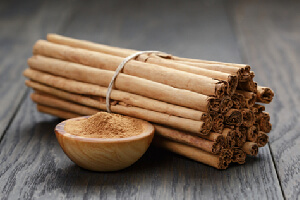Why Porcelain Is So Expensive
Narrator: Sculpting, glazing, and firing are just a few of the labor-intensive steps required to make ceramics. Handmade ceramic dinnerware isn’t cheap, but porcelain dinnerware can be even more expensive. The price of porcelain varies, but some dishware, like this plate, can cost over $400. So how are ceramics made, and why is porcelain so expensive?
There’s a good chance that you sit on porcelain every day. It’s the most common material used to make toilets. The reason why is also why it’s a popular choice for dishware. Compared to other ceramics, porcelain is more durable and nonporous, so it lasts a long time and it’s easy to clean. It has a distinct white color, and unlike opaque stoneware, some porcelain is translucent.
The secret to these differences is in the clay. Clay used for porcelain contains a high percentage of kaolin. This is what makes porcelain white. Kaolin is found all over the world, but large high-quality deposits are rare.
Satoru Matsumoto: Pottery stones from Jingdezhen [in China], Arita, and Amakusa can be used to make porcelain without adding other ingredients. The stone is characterized by being very white. Porcelain clay that has been mixed with other ingredients will be slightly gray. The glaze is used to make it look white.
Narrator: Porcelain is often referred to as china, which is where it was first created. But today, it’s made all over the world. This is the Arita Porcelain Lab in Japan. Artisans young and old have made porcelain here for over 200 years. There are countless recipes for porcelain clay, but in addition to kaolin, they usually contain materials like quartz, feldspar, and ball clay. Each one changes the properties of the clay. Ball clay makes it more malleable, and feldspar helps it become glass-like when fired. The whitest translucent clays need to be free from impurities and generally cost more than other ceramic clays.
But even for experienced potters, porcelain can be tricky to work with. In order to produce a large number of pieces, this workshop has an artisan for each specific step in the process. Even though 10 people work on each piece, producing new dishware can take over a month.
Ryosuke Watanabe: If too much force is applied when molding, it will be thin when finished. On the contrary, applying too little force will result in a wobbly, messy finish. It’s fun to see the shape gradually take form.
Narrator: Compared to other ceramics, many porcelain clays are challenging to mold by hand. It’s also more prone to cracks when drying. To help with this, and to produce more uniform pieces, this workshop uses molds for complex shapes. Katsumi Yamashita has been working with porcelain for 60 years.
Katsumi Yamashita: Making pottery requires intuition. For example, I am working on gluing right now and I need to know if the hardness of this clay is good or bad. So I judge the degree of dryness. It is interesting because it is difficult.
Narrator: One of those difficult steps is glazing. Glazing seals the clay, but it also adds color and patterns, and it’s one of the reasons that ceramics can be so expensive. At this workshop, each design is delicately painted by hand.
Meiko Yoshinaga: What I am working on here now is an order from an artist. The design is made in consultation with the artist. The paints range from the very expensive to inexpensive, especially paints for overglaze paintings that have a big range in price. One time when I was going to buy a paint and asked for 100 grams, they told me it would cost hundreds of dollars. I couldn’t buy it. The time it takes to paint is directly reflected in the price. The more time it takes, the higher the price.
Narrator: Another challenge in making porcelain is temperature. In order to achieve that glass-like surface, porcelain is fired at a higher temperature than most other ceramics, usually around 1,300 degrees Celsius.
At this workshop, pieces are fired three times, a lengthy but crucial process. The first firing is done without glaze, at 950 degrees for two days. Slow firing ensures that pieces don’t break in the kiln. Once they’ve been fired, artisans apply what’s called underglaze. The main firing, at 1,300 degrees, takes three days. Loading this kiln is a daunting task, but it has to be done carefully. Otherwise, pieces could be destroyed inside. Thankfully, this firing was a success. Now the final design starts to take shape.
Satoru Matsumoto: Overglaze painting is applied to the baked products. It is then baked at 800 degrees Celsius to complete the process. It takes about a month and a half to two months to make a large dish, from molding to overglaze painting.
Narrator: The price of porcelain varies based on the size and complexity of the design. A simple rice bowl costs around $7, but the most expensive platter from this workshop costs a few thousand dollars. This blue and white design is a traditional look for porcelain, but in order to maintain interest in this ancient craft, the Arita Porcelain Lab has tried to create more contemporary designs that fit into a modern home.
Satoru Matsumoto: The original Arita porcelain was very colorful and looked good when seen in a Japanese house. But I just think, now that the living environment is becoming more modern, I think the design is good, but the color does not match the living environment. In order to continue for the next 100 or 2000 years, I believe that we must constantly create new techniques and take on new challenges.















